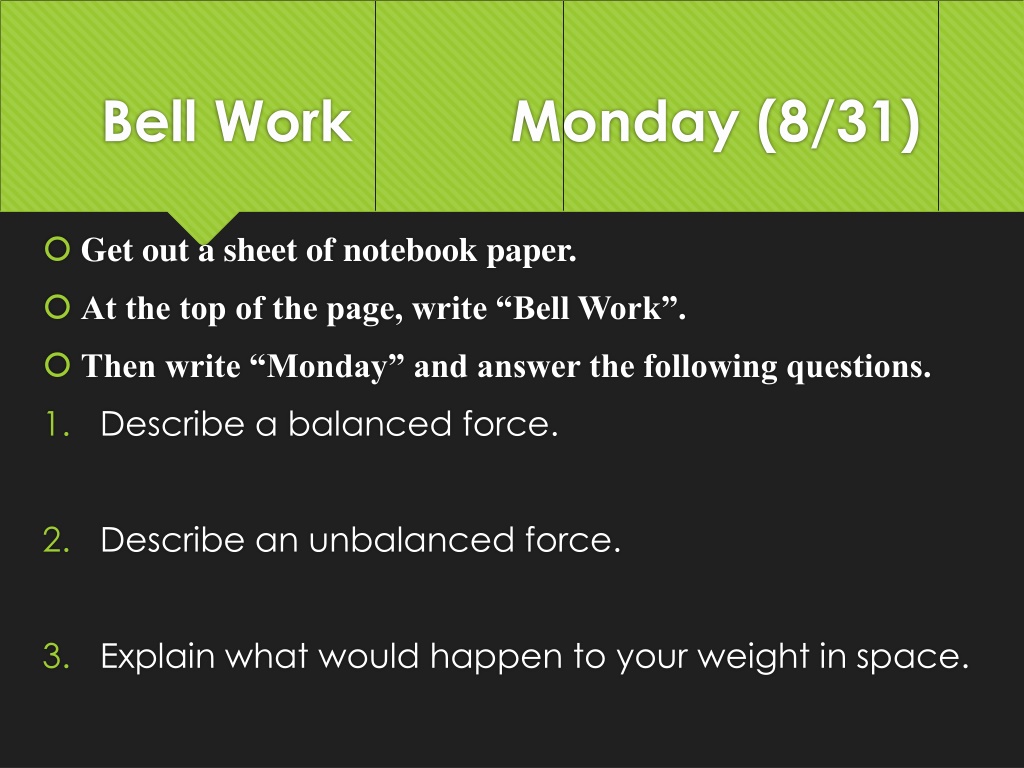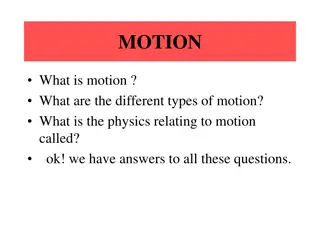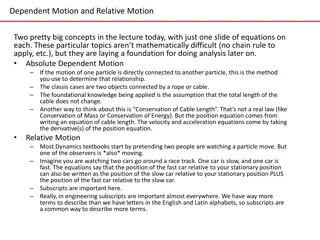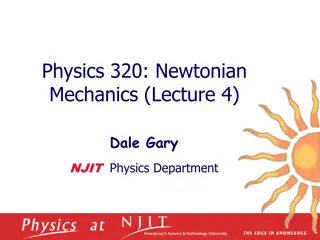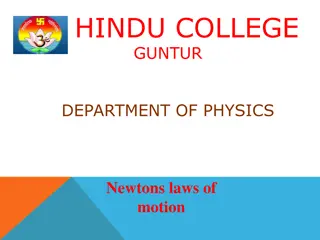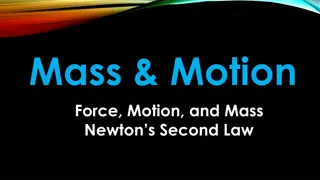Laws of Motion Bell Work and Activities
Explore Newton's laws of motion through a series of Bell Work exercises covering balanced and unbalanced forces, weight in space, Newton's first and second laws, and identifying scenarios based on the laws of motion. Engage in practical examples and calculations to enhance understanding.
Download Presentation

Please find below an Image/Link to download the presentation.
The content on the website is provided AS IS for your information and personal use only. It may not be sold, licensed, or shared on other websites without obtaining consent from the author. Download presentation by click this link. If you encounter any issues during the download, it is possible that the publisher has removed the file from their server.
E N D
Presentation Transcript
Bell Work Monday (8/31) Get out a sheet of notebook paper. At the top of the page, write Bell Work . Then write Monday and answer the following questions. 1. Describe a balanced force. 2. Describe an unbalanced force. 3. Explain what would happen to your weight in space.
Bell Work Monday (8/31) Get out a sheet of notebook paper. At the top of the page, write Bell Work . Then write Monday and answer the following questions. 1. Describe a balanced force. Forces on the object cancel each other out so the net force is zero which means no movement. 2. Describe an unbalanced force. Net forces on the object is not zero so the object will move. 3. Explain what would happen to your weight in space. It would be zero because there is no gravity.
Bell Work Tuesday (9/1) Get out your Bell Work paper. Write Tuesday and answer the following questions. 1. Describe Newton s 1st law of motion. Object at rest stays at rest and object in motion stays in motion unless outside force acts on it; resistance to change in motion (inertia) 2. Support your description using a real-life example. Football on a tee will not move unless kicked. The kickball will continue to move until it is stopped.
Bell Work Wednesday (9/2) Get out your Bell Work paper. Write Wednesday and answer the following questions. 1. Describe Newton s 2nd law of motion. An object will accelerate in the direction of the force with an acceleration equal to the force divided by the objects mass. (F = m x a) 2. Support your description using a real-life example. It takes more force to move a school bus than a small car. 3. How much force is needed to accelerate a 60 kg skier at 2 m/s2? F = m x a F = 60 kg x 2 m/s2 = 120 N
Bell Work Thursday (9/3) Get out your Bell Work paper. Write Thursday and determine which law of motion each scenario is and provide evidence. Scenario Newton s Law of Motion 1. It took more force to push the truck than the car. Evidence 2nd F = m x a 2. Air coming out of a balloon Action/Reaction 3rd 3. The hockey player hits the puck. Puck was at rest until hit. 1st
Laws of Motion NGSS Unit 4: Forces and Interactions
Foldable INSTRUCTIONS!! Directions: Fold on the solid line. Cut on the dash lines. Using the directions, fill in the foldable.
Newtons First Law of Motion An object at rest remains at rest and an object in motion remains in motion until outside force acts on it Resistance to change in motion (inertia)
Newtons First Law of Motion at the Space Station
STOP! On your foldable draw a picture demonstrating Newton s 1st Law of Motion.
Newtons Second Law of Motion An object acted on by an unbalanced force will accelerate in the direction of the force with an acceleration equal to the force divided by the objects mass. F = m x a
Newtons Second Law of Motion at the Space Station
STOP!! On your foldable, DRAW a picture demonstrating Newton s 2nd law of motion.
Newtons Third Law of Motion For every action, there is an equal but opposite reaction.
Newtons Third Law of Motion at the Space Station
STOP!! In your foldable, DRAW a picture demonstrating Newton s 3rd law of motion.
